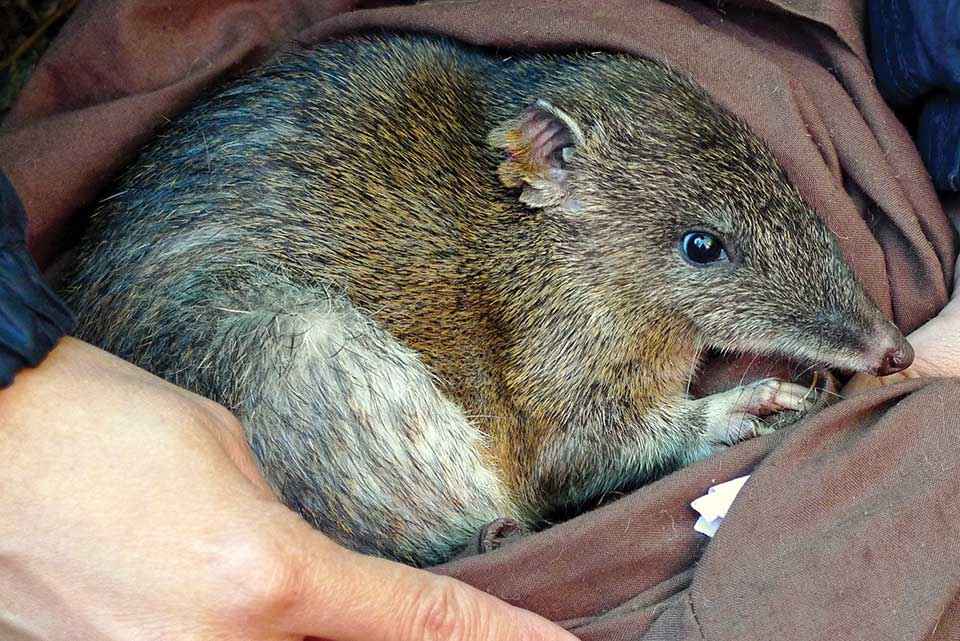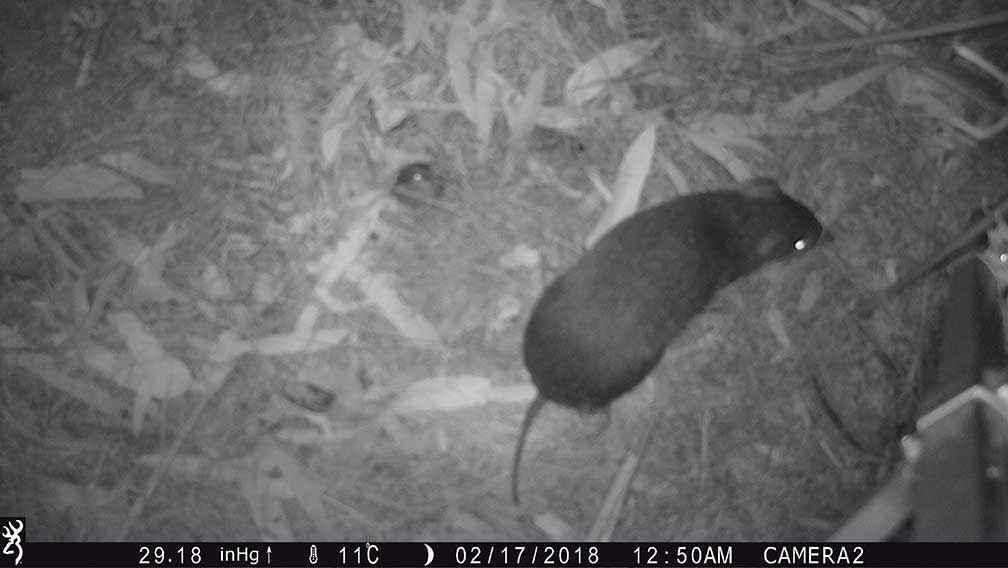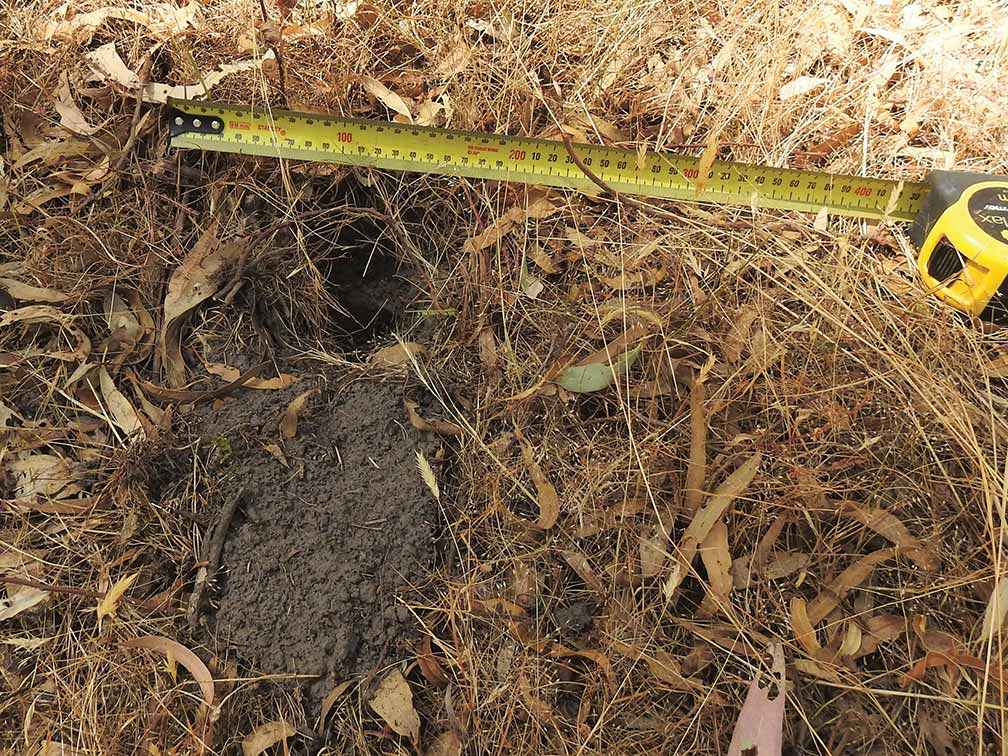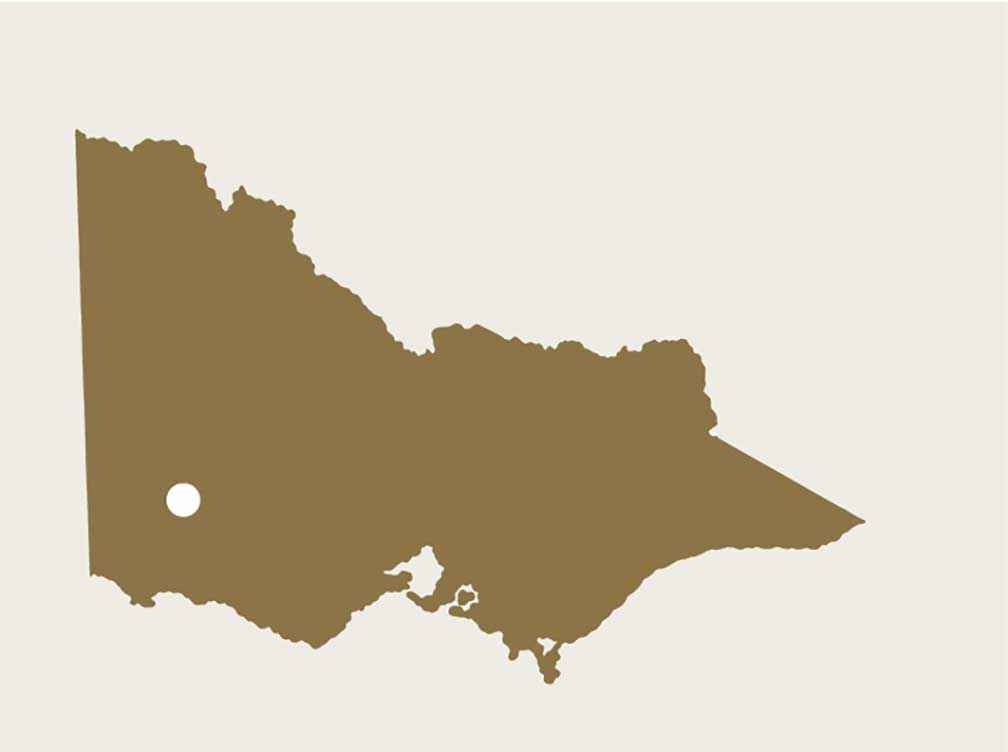Victorian Landcare Magazine - Summer 2022 , Issue 83

In 2013 Catherine and I purchased a 145-hectare property at Fyans Creek with the view to managing it for biodiversity values. The property is situated between Halls Gap and Stawell at the foot of the Mt Difficult range. To the west it abuts the Grampians National Park, part of the Gariwerd Aboriginal cultural landscape.
Much of the property had been grazed since the 1870s. It comprises partially cleared, but now fast-regenerating red gum flood plain with many very large trees, yellow box/red gum woodland, and heathy woodland. An area of around 70-hectares of mixed yellow box/red gum woodland has a medium to very dense bracken understorey with glades of native grasses.
There is a seasonal creek and an extensive seasonal wetland, which we have restored to pre-drainage flow conditions by installing a weir, under a permit from the Wimmera CMA and with assistance from Nature Glenelg Trust. The property is home to many Environment Protection and Biodiversity Conservation Act (1999) (Cth) listed plant species. Most of the property is now under a Trust for Nature covenant.
Keen to learn what wildlife was on the property, we started playing with wildlife trail cameras back in 2013. This involved attaching cameras to trees either on our access road or sites with obvious animal pads. In 2017 we began experimenting with baited camera traps to see if we could get pictures of smaller animals. We used the standard bait of peanut butter, oats, and honey.
This bait had been successful at attracting southern brown bandicoots for a gene flow study in south-east South Australia we had assisted with, but we never considered this species might be in our area. Large scale surveys conducted in 2011–12 across public and private land on the eastern and western fringes of the Grampians National Park found bandicoots at only one location on private property near Pomonal. None were found in the Black Range which had previously supported a southern brown bandicoot population. It was our understanding that the bandicoots were close to being regionally extinct.
Our initial camera trap results yielded lots of yellow footed antechinus, brush-tailed possums, echidnas, swamp and red necked wallabies, scrub wrens, blue wrens, babblers, and stumpy tails. Unfortunately, they also attracted the occasional fox or feral cat and lots of black rats.
Unfortunately, they also attracted the occasional fox or feral cat and lots of black rats.
In February 2018 we moved the cameras to a new area comprising dense bracken with a red gum/yellow box/rough barked manna/black wattle overstorey. One camera was placed in bracken just off an open area that is an ephemeral water course. One morning I was trawling through the usual combination of footage showing swaying vegetation, wallabies, possums and antechinus, when I saw something different.
I wasn’t immediately sure what it was as the camera was tripod-mounted, so the picture was taken from above.
When I realised it was a southern brown bandicoot I almost fell off my chair.
I scrolled back and forward through the images to check then forwarded them to contacts at Trust for Nature and Parks Victoria who quickly confirmed it was indeed a southern brown bandicoot.

Above: Eureka – the first southern brown bandicoot captured on camera on the Carlyle’s property in the Grampians.
I scrolled back and forward through the images to check then forwarded them to contacts at Trust for Nature and Parks Victoria who quickly confirmed it was indeed a southern brown bandicoot.
We were immediately keen to get an idea of numbers and extent of the bandicoots. Considering the vegetation type there was a potential area of more than 70 hectares on our property and a further 40 hectares of contiguous crown land. We rotated four cameras across18 locations for an exposure period of four weeks.
We also started to look for bandicoot diggings. The first diggings we found fitted the size range described in the literature, but we have since found diggings of up to 30 centimetres deep which are southern brown bandicoots.

Above: Typical marks from southern brown bandicoot diggings.
Diggings are easy to find in open areas, but almost impossible to locate under dense bracken.
We suspect that the bracken cover has allowed the bandicoots to survive predation by foxes and cats.
Our cameras capture images of foxes and cats in the open areas surrounding the dense bracken, but it is rare to get a photo within the bracken itself. We discontinued camera trapping in the bandicoot area when we noticed foxes were periodically attracted to the baits.
Since 2017 we have been running an active fox baiting program using 10 to 15 Canid Pest Ejectors (CPE) across the property, and cage traps for feral cats. In four years, we’ve had 146 CPE firings and trapped seven cats. Foxes are always around. Cats don’t seem to reside on the property but pass through periodically, we deploy cage traps whenever a cat is seen on camera.
We are continuing to find sporadic bandicoot diggings in the open areas where we found them previously, and we occasionally find them elsewhere on the property. Our bandicoot adventure has encouraged and hastened our work to progressively replant corridors with thicket forming understorey plants to extend and connect areas of potential southern brown bandicoot habitat across the property.
Clive Carlyle is a member of the Jallukar Landcare Group and chair of the Project Platypus Landcare Network. For more information email catherineandclive@bigpond.com

Above: Location map - Fyans Creek